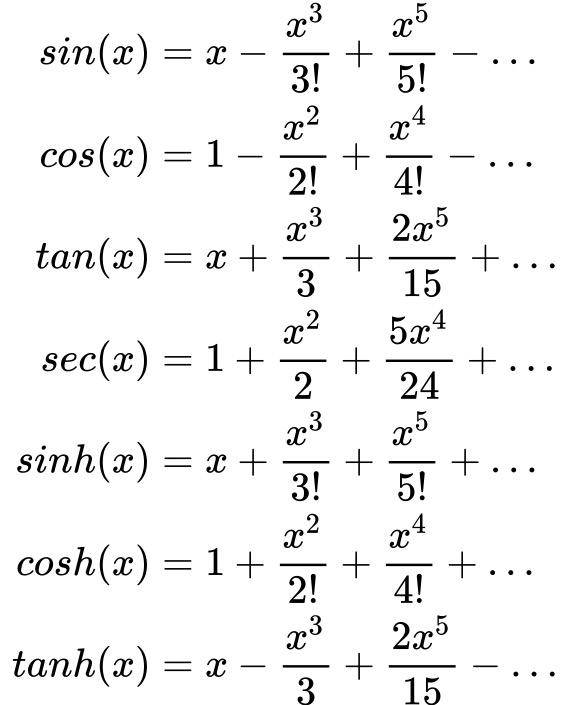This page is for explorations in 3D Mandelbulbs. Mandelbulbs are the most well known of the 3D fractals.
Using polynomials instead of a simple power in the formula adds a lot of variety and complexity. Try to investigate some that don't appear in the list. Use the first few terms of a Taylor series multiplied by x or x squared to raise the lowest power term to at least the second power. Equations like that almost always make nice fractals. Here are the Taylor series for some common trigonometric functions.

The polynomials that appear in the fractals are listed below. Fracton uses the variable f while the Taylor series is written with the variable x.
| Fracton Equation | Taylor | Comment |
| f^2 - f^4 | - | Not Taylor |
| x^2 -x^4/6 | x sin(x) | First 2 terms |
| f^2 + f^4 / 2 | x cosh(x) | First 2 terms |
The formulas are entered into Fracton's triplex compiler and may not represent an actual trigonometric function. They do generate some nice fractals though. The triplex compiler does not have a complete set of math functions so you can't enter a trigonometric function directly. For more information see the Triplex Language Guide.
Note that Fracton's triplex compiler can only correctly multiply and divide scalars with a triplex variable. A scalar is a constant like the number 6 which is actually (6,0,0).
You can download a folder of files to generate the fractals.
Download Fracton document files mandelbulb.zip
- This page uses cookies but you can still view the page with all cookies turned off..
- Posting requires a Disqus account and cookies have to be enabled. See Posting FAQ and Guidelines
- This discussion is moderated.
- Click on an image to open it in a new window at full size.
- Right click an image to download the full size image to your computer.